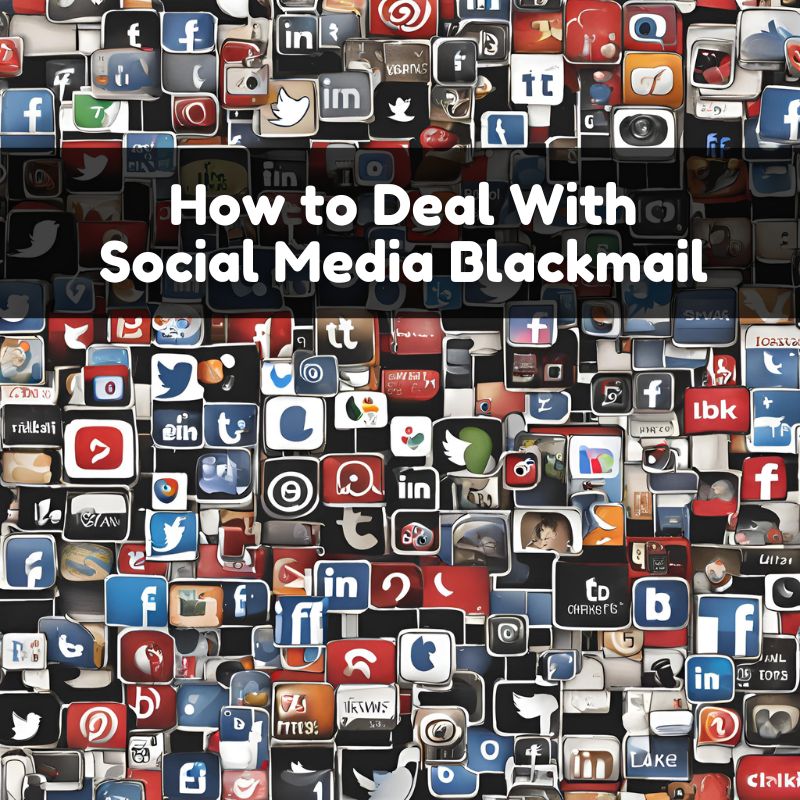
Dealing with social media blackmail can be extremely stressful and challenging. Blackmail on social media often involves threats to release compromising or private information unless certain demands are met. Here’s a comprehensive guide on how to handle such situations:
1. Stay Calm and Assess the Situation
- Don’t Panic: It’s important to stay calm and not make any hasty decisions. Panicking can lead to mistakes or actions that may worsen the situation.
- Assess the Threat: Determine the nature of the blackmail. Understand what information is being threatened and the demands being made.
2. Do Not Comply with Demands
- Avoid Paying or Yielding: Paying or giving in to demands generally does not guarantee that the blackmailer will stop. In fact, it may encourage further threats.
3. Gather Evidence
- Document Everything: Take screenshots of all communications and threats from the blackmailer. Save messages, emails, and any other relevant content.
- Note Dates and Times: Keep a record of when each communication occurred, as this can be useful for legal actions.
4. Report the Blackmail
- Social Media Platforms: Report the blackmail to the social media platform where it is occurring. Platforms like Facebook, Twitter, Instagram, and others have mechanisms for reporting harassment and blackmail.
- Facebook/Instagram: Use the ‘Report’ feature available on the post or message and select the relevant issue (e.g., harassment, threats).
- Twitter: Report the user or tweet by clicking on the three dots or ‘More’ option and selecting ‘Report Tweet’.
- Law Enforcement: In many cases, blackmail is illegal. Contact your local law enforcement agency to report the blackmail. Provide them with all the evidence you’ve collected.
- File a Report: Be prepared to provide detailed information and evidence to assist in their investigation.
5. Protect Your Online Presence
- Adjust Privacy Settings: Review and tighten privacy settings on your social media accounts to limit who can view your information.
- Change Passwords: Update passwords for your social media accounts and any other accounts that might be linked to your social media. Use strong, unique passwords and enable two-factor authentication where possible.
- Check for Breaches: Monitor your accounts for any unusual activity or signs of unauthorized access.
6. Seek Support
- Talk to Someone You Trust: Discuss the situation with a trusted friend, family member, or counselor. They can provide emotional support and practical advice.
- Professional Advice: Consider seeking advice from a legal professional who specializes in online harassment or cybercrime. They can provide guidance on the best course of action and legal options.
7. Consider Mental Health Support
- Emotional Impact: Experiencing blackmail can be emotionally taxing. If you’re feeling overwhelmed, consider speaking with a mental health professional for support and coping strategies.
8. Educate Yourself and Others
- Stay Informed: Learn about online safety and security practices to prevent future incidents. Educate yourself on how to recognize and avoid potential threats.
- Spread Awareness: Share information about online safety with friends and family to help them avoid similar situations.
9. Legal Considerations
- Understand the Law: Laws regarding blackmail and online harassment vary by location. Familiarize yourself with local laws and regulations related to online blackmail.
- Legal Action: In some cases, pursuing legal action may be appropriate. Your legal advisor can help determine if this is a viable option based on the evidence and circumstances.
Conclusion
Dealing with social media blackmail requires a proactive and measured approach. By staying calm, documenting the situation, reporting the blackmail, and seeking support, you can effectively address and mitigate the impact of such threats. Remember, your safety and well-being are the top priorities. If you ever feel threatened or in danger, do not hesitate to contact law enforcement immediately.
